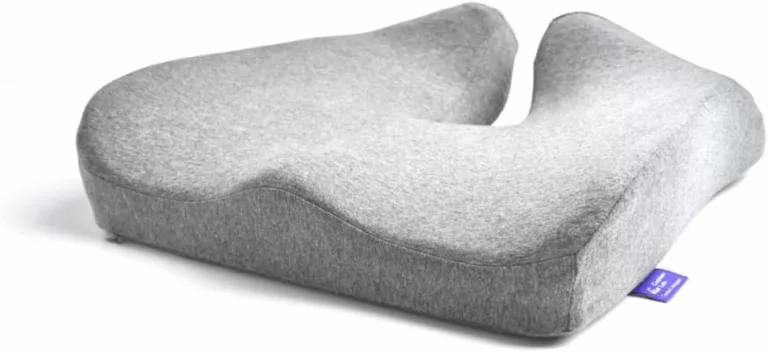Sitting in a non-ergonomic office chair increases the risk of developing musculoskeletal disorders that affect the tendons, ligaments, joints, nerves, and muscles. It can also affect your posture and restrain blood flow, so think of ergonomic office chairs as an investment for your productivity and health.
Using a non-ergonomic office chair puts pressure on your backbone and spine, which causes back pain. It can also cause complications such as cervical spondylosis and deep vein thrombosis. An ergonomic chair conforms to the shape of your body, keeps your tissues and joints in a neutral position, supports proper posture, and allows for proper pelvis and hip alignment. This will allow you to focus without discomfort, increase your energy levels and lower the risk of strain and injury.
If you’re an employer, providing your employees with ergonomic office chairs will help boost their productivity and reduce absenteeism. By making your office safer, you’re also providing your workers with a more flexible and comfortable environment that can adjust to every employee. Aside from this, ergonomic chairs can withstand years of use. Therefore, investing in ergonomic office chairs will help you save a lot of money and time in the long run.
How to Find the Best Ergonomic Office Chair
Not all chairs are made equal, so you have to find the best one that fits your needs and budget. Here are some of the most important factors that you should consider when looking for an ergonomic office chair.
Adjustability
The adjustable parts of ergonomic office chairs include the armrest, headrest, seat, and height. Knowing how the adjustments work and affect your comfort and productivity will help you make the right decision when choosing an ergonomic office chair. Here’s what you need to know about each part.
The armrest should support your arms. It must be adjustable to the right height as well. Your activity or job description will dictate what you should consider when it comes to armrest adjustability. If you’re a computer operator, consider getting a chair that has a height-adjustable armrest. That way, your arms will be at a comfortable angle with the keyboard. Your shoulders should be relaxed, and your forearms shouldn’t be on the armrest while you’re typing.
- Backrest
You should be able to recline, sit vertically erect, and lean forward without any problem. The backrest should be 12” to 19” wide. It should support the spine’s natural curve as well. If the backrest and seat come together as a single piece, the backrest must be adjustable in the back and forward angles with a proper locking mechanism to keep it in place. Some chairs have a backrest that you can tilt at a certain angle. This feature is particularly beneficial for those with a strained lower back because you’ll be able to move the backrest to a more comfortable position. The backrest should offer proper lumbar support that doesn’t create pressure points.
- Headrest
Look for a chair with an adjustable headrest so that you can rest your neck from time to time. You should be able to place the headrest between your head and neck without any problem. Some chairs come with a tilting headrest, which can help soothe the neck muscles.
Lumbar Support
If you sit for long hours without proper support for your spine’s inward curve, you tend to slouch and strain your lower spine. Ergonomic chairs must have a lumbar adjustment so that you can get proper support for your lower back.
Seat Height, Depth, Width, and Material
You should be able to adjust the seat height easily. A height that ranges from 16” to 21” off the ground should be fine for most people. At this height, you can have your feet flat on the ground. The seat must also have enough depth and width to support your body. The standard is usually 17” to 20” wide.
The depth should allow you to sit with your back against the chair’s depth and width while leaving about 2” to 4” between the seat and the back of your knees. The seat’s backward and forward tilt must be adjustable as well. The backrest and seat should also have enough padding so that you can sit comfortably for long hours. Pick a seat with a breathable cloth fabric as it’s better than one with a hard surface.
Weight Capacity
High-quality ergonomic office chairs have various weight spans that usually range from 250 to 400 pounds. When choosing an ergonomic office chair, pick one that matches your weight.
Stability
Ergonomic chairs are usually equipped with caster wheels. Soft caster wheels are more stable on hard floors, while hard caster wheels work better on carpeted floors. Choose an ergonomic chair that has a 5-point base because it is proven to offer more stability.
Conclusion
An ergonomic office chair is ideal for anyone whose job involves sitting for extended periods. It’s also beneficial for people with medical conditions that affect posture and vertebrae. Even if you don’t have a medical condition, it’s still a good idea to get an ergonomic chair as it can help improve your posture, productivity, and overall health.




